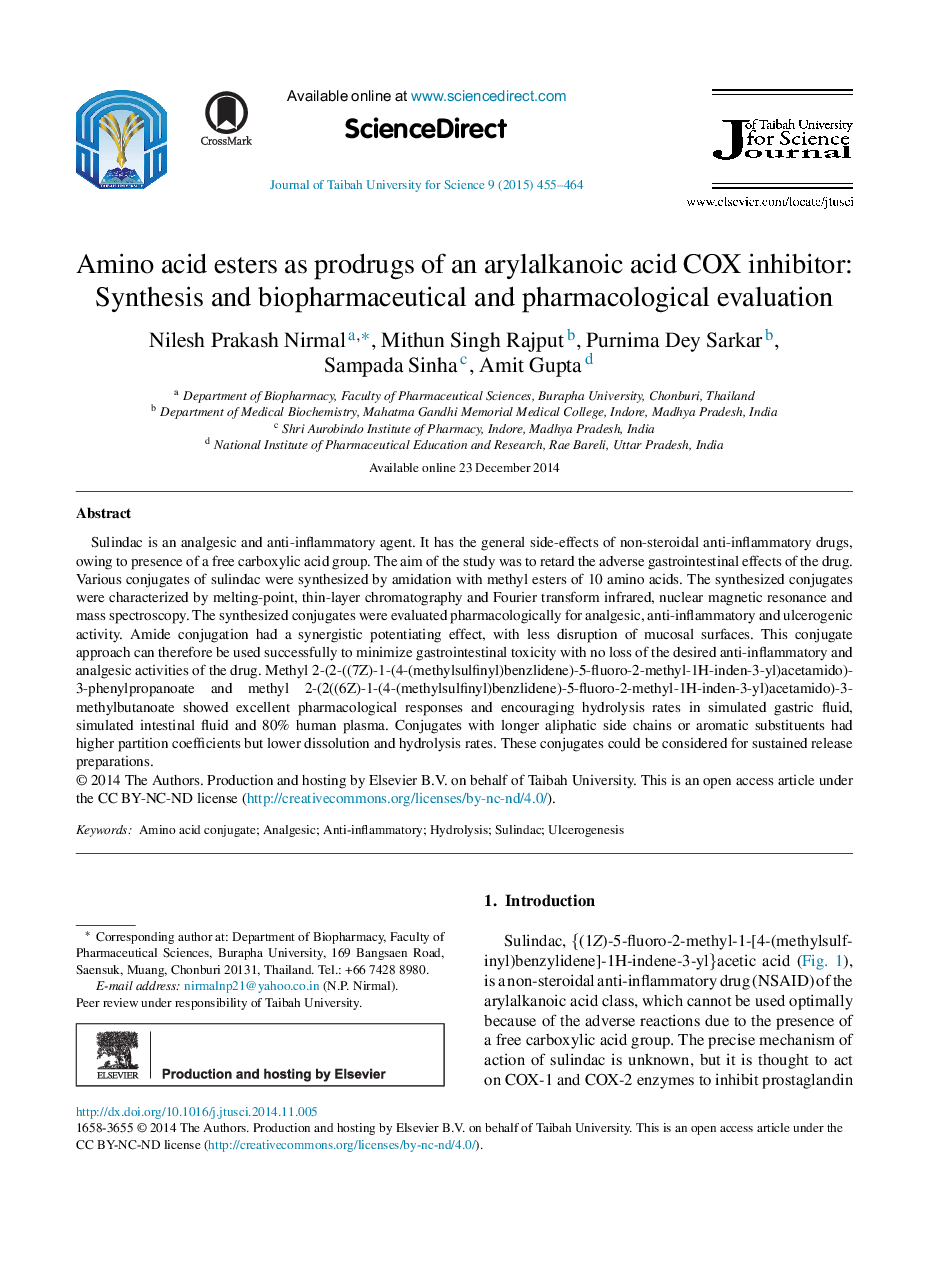| Article ID | Journal | Published Year | Pages | File Type |
|---|---|---|---|---|
| 1260734 | Journal of Taibah University for Science | 2015 | 10 Pages |
Sulindac is an analgesic and anti-inflammatory agent. It has the general side-effects of non-steroidal anti-inflammatory drugs, owing to presence of a free carboxylic acid group. The aim of the study was to retard the adverse gastrointestinal effects of the drug. Various conjugates of sulindac were synthesized by amidation with methyl esters of 10 amino acids. The synthesized conjugates were characterized by melting-point, thin-layer chromatography and Fourier transform infrared, nuclear magnetic resonance and mass spectroscopy. The synthesized conjugates were evaluated pharmacologically for analgesic, anti-inflammatory and ulcerogenic activity. Amide conjugation had a synergistic potentiating effect, with less disruption of mucosal surfaces. This conjugate approach can therefore be used successfully to minimize gastrointestinal toxicity with no loss of the desired anti-inflammatory and analgesic activities of the drug. Methyl 2-(2-((7Z)-1-(4-(methylsulfinyl)benzlidene)-5-fluoro-2-methyl-1H-inden-3-yl)acetamido)-3-phenylpropanoate and methyl 2-(2((6Z)-1-(4-(methylsulfinyl)benzlidene)-5-fluoro-2-methyl-1H-inden-3-yl)acetamido)-3-methylbutanoate showed excellent pharmacological responses and encouraging hydrolysis rates in simulated gastric fluid, simulated intestinal fluid and 80% human plasma. Conjugates with longer aliphatic side chains or aromatic substituents had higher partition coefficients but lower dissolution and hydrolysis rates. These conjugates could be considered for sustained release preparations.
